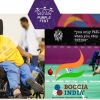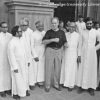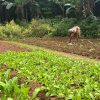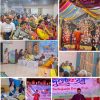Goa is abuzz with excitement as vintage bike and car owners, users, collectors and fans are decking […]

CELEBRATING `WORLD IDLI DAY’… On March 30!
April 05- April 11, 2025, Eating is Fun / Eating is Yuck! - A variety food column, Life & Living April 4, 2025IF you’re asking me idli is one of the super foods of the world and the comfort food of many down south India and also with a lot of Indians and others around the world! So it’s in the fitness of things that we must celebrate “World Idli Day” on March 30. Hurrah for idli of south Indian fame!
As a matter of fact I grew up on idli-chutney-sambar for weekend morning breakfasts or dinners in my old home town of Penang in Malaysia in the 1950s and 1960s. It was in Penang that I was introduced to the wholesome charms of one of south India’s much loved foods, idli. The perfect idli – misty white, steaming hot, call it “rice cakes” in English if you wish. Rice cakes doesn’t come close to describing the idli, terrible description! Idli is idli or “etli” at Viloo Villas which is still down Penang Street, where my father often took us on days my mother felt like a break from kitchen work…at Viloo Villas down the street where we lived for some years, idli was pronounced as “etli.” It was an eatery run by Tamil migrants settled in Penang (south Indians went out to the then British Raj Straits Settlements of Malaya to work in the rubber estates).
BUT memories of Viloo Vilas can haunt me on some days to this day. Those days in the 1950s we sat en famille on these long rough cut wooden benches and tables for first come, first serve service. As we waited hungrily we could see the preparations going on in the large kitchen…the huge brass idli steamer lined with thin white linen cloth, the dollops of fermented rice and urid dal batter being poured into the hollows of the platter, and it would go into a huge steamer. A few minutes later the batch of steamy white beauties would emerge. One of the boys would gather them in a lined basket and serve them on the waiting freshly laid out banana leaves before us…three idli each person, accompanied with chutneys and a most dulcet aromatic, drumstick and baby onions sambar.
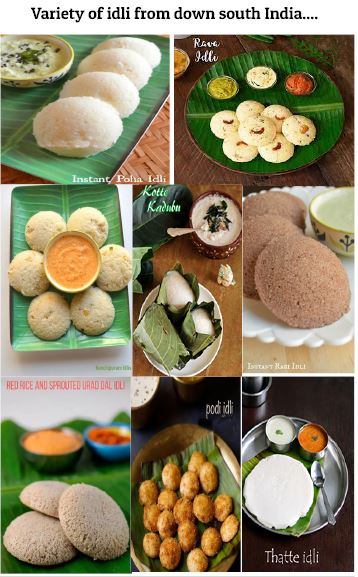
I vividly remember one particular potato sambar with a divine flavor buried in my memorial palate! Anyway, many were the times when together or solo or in pack-aways we feasted on the south Indian Udipi fare of the now iconic Viloo Villas and if I go to Penang on holidays the first thing I want to do is go look up Viloo Vilas to see if the idli is still there… along with the savory doughnut medhuvada and the dosa (“tose”), also curry leaf-laced upma with lots of honest fresh soft green peas in it (not your hard defrosted peas of today)…one could breakfast or dine at Viloo Vilas and go home and sleep the night away peacefully.
These are my memories of eating out in the now heritage district of Georgetown on the little island of Penang in Malaysia, when I was a schoolgirl girl growing up there along with four siblings — three sisters, a baby brother who passed away after a bad diphtheria vaccine gone wrong I think, and another brother who still survives in Penang.
Some 50 years later I’m in Panjim, Goa, reminiscing about eating out in my salad years in my old home town country. But this is to say the south Indian idli is famous most everywhere south Indians have settled around the world and being fermented food, it’s rated as health food (probiotic food, gut-friendly)…from the plain austere idli we have other take-offs of say dahi idli, fried idli, rava idli, Kanchipuram idli, so many idli avatar, basically same but not the same…in a home in Karnataka once I remember a cake-styled idli…it arrived to table like a steaming white cake tapped out from a tin, the hostess cut it into wedges before placing the wedges on our banana leaf. We rejoiced and feasted on the variant idli-sambar combo.
The accompanying chutneys too are many. There’re several versions of the traditional freshly grated coconut chutney, there’s the onion-tomato chutney, peanuts and sesame seeds too go into the chutney…and much loved is the powder chutney called “gun powder” or more dignifiedly “molhapodi.” Podi idli is steamy idli tossed in a ghee-laced podi and is very yummilicious, as long as the podi is not packed with hot red dry chilies. The podi or mix is not meant to be red chili hot but mildly spicy with a grounded mix of various roasted protein-rich dal or pulses — tur dal, moong dal, urid dal, a generous amount amount of intoxicating asafetida or hing…what gives life to so many Indian curries of India (must tell you more about hing later).
DOWN south India in Mysore I remember a small homestay where their in-house dining room started serving breakfast earlier at 6 am onwards to facilitate the needs of those who had to leave early for work…all servings were in a set of three — be it three idli, three dose, three medhuvada, three uttappam (soft thick pancakes of rice batter, also steam cooked more or less with a smattering of ghee or sesame seed oil). One could order for onion or tomato garnished uttappam (I’d take an uattappam over pizza any day).
Which brings me to who decided on celebrating World Idli Day? Reportedly it was SAMAYAL Sangam president Rajamani who declared the day. Interestingly, it’s incomparable food historian KT Achaya who speculated if the modern idli originated in Indonesia which has a long tradition of fermented foods. References to the modern recipe of idli appears in Indian works only after 1250 CE…according to Achaya the cooks employed in the Hindu kingdoms of old in Indonesia might have invented the steamed idli there and brought the recipe back to India some time 800-1200 CE. Achaya mentions an Indonesian dish called “kedli” which according to him, has a resemblance to the idli as we know it in India.
There are disagreements on this of course with many other foodie researchers saying there’s a tradition of fermented foods in every culture and likewise with fermented idli…it’s a natural process discovered independently in India! Well, the Gujarati “Varnaka Samuccaya” (1520 CE) mentions idli as “idari” and also mentions it’s a local adaptation of “idada” (a non-fermented version of the Gujarati steamed “dokra”). The earliest extant Tamil work mention idli as “itali” is Macccauranam, dating to 17th century. Accept whatever you wish but I’m so happy in 2015 the Chennai-based idli caterer Eniyavan started celebrating March 30 as World Idli Day – I’m all for it for the humble idli is one of all-time favorite comfort food no matter where I am and I like to think I’ve become some kind of an idli connoisseur – make sure no one cons you with rice idli only. A true white idli will observe a 3 to 1 rice-urid dal ratio to soak overnight, grind and ferment the batter…to arrive at a bite full of flavorful wholesome steam-cooked idli! Yes, we also have mini-idli and these are generally used to prepare what is called podi-idli in which case I feel chutney and sambar are dispensable.
WHERE to go for good idli? Go to Viloo Villas in Penang (take me to as a guide if you wish) or closer home in Goa head for Kamat Hotel or Café Bangalore down town Panaji. The five-star hotels of course will serve some of the best south Indian breakfast fare. Or go to Mumbai where the Udupi eateries are salt of the earth eateries down town Flora Fountain where there’re several Udipi eateries serving idli…best of all go to Matunga (East) to Ram Ashraya or Café Madras…there’s also Radha Krishna at Vile Parle (near the railway station). The secret to idli is the quality of the idli first and then the coconut chutney and sambar!
I don’t way I have several books on south Indian cuisine, including one devoted entirely to — “Dosai” by Chandra Padmanabhan, dosai referring to the amazing variety of savory pancakes made from batter similar to that for making idli, little difference. Why are there no cookbooks devoted to only the many varieties of idli! Comfort food of many in India down south and also up north now…the story goes that when in 2015 the first World Idli Day was observed as the brainchild of Eniyavan, a popular idli-only caterer from Chennai, he made 1,325 varieties of idli including a 44 kilogram idli which was cut by some top bureaucrat of the day!
Let’s say all idli-lovers unite wherever they are on World Idli Day and seek out their favorite idli place to…celebrate the quintessential south Indian idli! Not all boring if you’re asking me, like one hears one British UK-based Prof Edward Anderson tweeted on Oct 6, 2020 when he said idli are the most boring things in the world. Oh no, I would say the British are boring, no wonder they had to come to India to become less boring!
In conclusion, after such a boorish British comment, so many south Indians were so upset that they decided to have and promote and celebrate World Idli Day. I’m celebrating idli day whenever I feel like it, okay.




